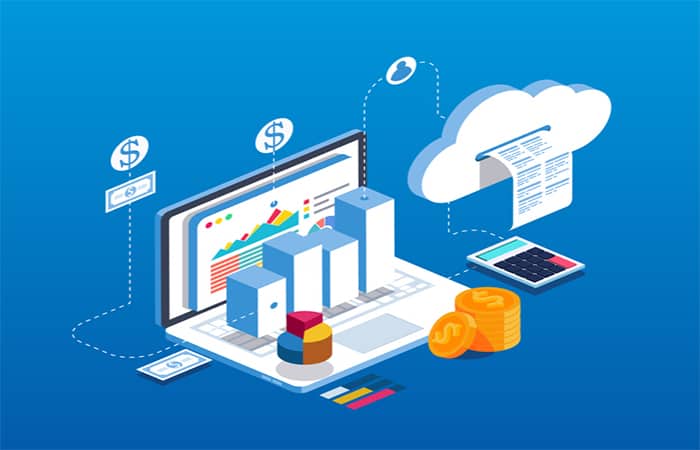cannot happen without experimentation, cross-company collaboration, and dialogue with customers. Industry 4.0 week sponsor Accenture explains.
As-a-service offerings are already standard in many industries. Take aviation, where aircraft companies don’t always purchase the engines they install outright. Instead, they increasingly opt to ‘rent’ them as-a-service and pay based on miles flown.
These pay-as-you-go models offer the ‘renter’ manageable usage fees (instead of high capital costs) and the flexibility to only pay for what they ‘consume’. What’s more, because renters don’t own the underlying technology, they don’t carry the depreciating goods on their balance sheet, with the manufacturer also responsible for service and repair.
But what’s in it for the manufacturer?

The business case for the rental model
There are two strong arguments for extending as-a-service approaches. First, manufacturers can work more closely with customers, finding new ways to add value or use the products. Second, it makes them more competitive. Most companies are looking to cut costs and make processes more efficient, which risks a race to the bottom if capex remains the only purchase option. A pay-per-use approach offers customers a beneficial pricing and payment structure, making the manufacturer more attractive.
An Accenture study illustrates the financial impact of this: comparing as-a-service software companies to conventional, product-selling developers showed the as-a-service companies grew by an average of 32 per cent per year, compared to 4 per cent of licence vendors. As-a-service companies also saw greater profitability (by seven percentage points).
Constant sales, constant exchanges
As well as increasing sales, as-a-service models stabilise cashflow. This boosts the ongoing maintenance and development efforts that support smart products and digital services, from bug fixes to security upgrades. As these efforts expand, factoring them all into a one-time, upfront price is next to impossible. The best way to manage them is with a pay-per-use approach.
Machinery manufacturer Biesse Group identified a range of new services to improve its customers’ hardware performance and overall productivity. It worked with Accenture to design a platform that enabled preventive maintenance alerts, machine management, manufacturing events analysis and remote software distribution, amongst other capabilities. Biesse customers can opt for a pay-per-use model and customise the services they receive, from machine alerts to advanced services like in-depth machine analytics. This improved their overall equipment effectiveness and productivity. Moreover, it could make these changes quickly. Flexible architecture and preconfigured IoT services meant getting the solution ready to deploy took only five months.
Pay per use is also more in keeping with the software-driven culture of a digitalised industry. But it cannot happen without experimentation, cross-company collaboration, or manufacturers and customers working together.
How to prepare for as-a-service
Companies considering offering as-a-service need to assess three important requirements.
First, ‘as a service’ depends upon clarity about the relationships between customer benefit, cost and price. A company should be able to forecast how they will develop, along with future demand. In other words, anyone wanting to try as-a-service must have networked products, digital customers, machine and service data, and basic capabilities in big data analytics.
Second, as-a-service industrial companies must combine smart products and services in customer-friendly, economical ways. The full added value of rental models is only realised when product and service businesses are seamlessly integrated with each other.
Third, a rental model demands new procedures in sales, customer service and finance. Product orientation must give way to customer or contract focus. Companies should establish new KPIs, measurement processes, and procedures – from sales, order taking and processing to customer service, activity recording and, above all, billing and accounting.
Start small and learn, learn, learn
Meeting these requirements enables companies to try the as-a-service approach. However, it’s important to start with small, readily achievable pilot projects and scale their success, before committing the whole business to as-a-service.
'It’s important to start with small, readily achievable pilot projects and scale their success, before committing the whole business to as-a-service'
Running a successful as-a-service business requires ever-deeper understanding of demand and cost trends. But what does this look like?
To extend the aviation example: a project starts with rules for profit and loss analysis, identifying the value that support services such as flight analytics or remote engine diagnostics would contribute to an as-a-service package. The second step, ‘parts pricing optimisation’, makes it possible to forecast the requirements for replacement parts, or the regular maintenance that a jet engine demands. This can help to not only identify cost, but also optimise purchasing and logistics. The final step is to link all information together, from engineering to customer service. Gathering more operational data from engines in use (both performance and maintenance), helps improve these forecasts further.
Bringing in legal and financial experts
Moving to a new business model requires more than just new pricing. It also demands more digital approaches and processes across the business, especially in the back office.
Manufacturing companies that previously sold few, if any, long-term contracts will have plenty of room for improvement around contract management. For example, converting to centralised business software to improve the ‘contract orientation’ of all procedures. Analytics and machine-learning tools for contract modelling and creation can also increase efficiency.
Invest to succeed
As-a-service business models offer significant advantages to manufacturers as well as customers. But investment is needed to realise these benefits. A foundation in analytics, digital services, digital marketing, and even ‘digital finance’ are a pre-cursor to a profitable new business model.
For more information get in touch with DigitalUKIMarketing@accenture.com
Are you at Hannover Messe April 1-5? Come swing by our Accenture booth in Hall 6, Booth H46 to see Industry X.0 in action, have a chat and register for some panel sessions.
Accenture is the partner of The Engineer’s 2019 Industry 4.0 week




Swiss geoengineering start-up targets methane removal
No mention whatsoever about the effect of increased methane levels/iron chloride in the ocean on the pH and chemical properties of the ocean - are we...